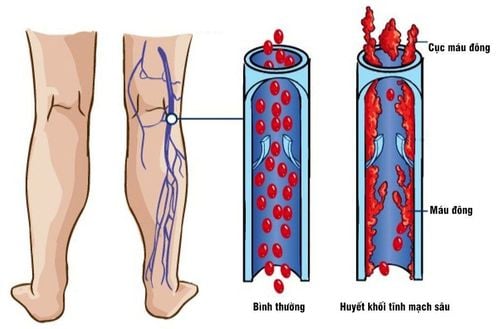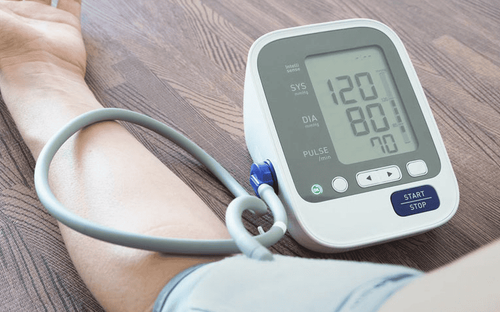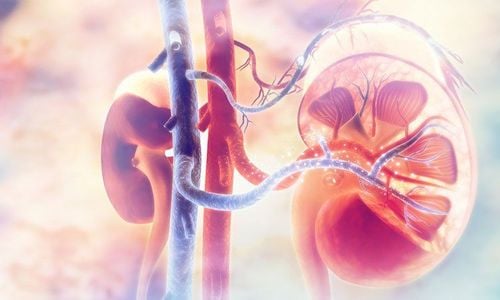This is an automatically translated article.
The article was written by the Department of Diagnostic Imaging - Vinmec Central Park International General Hospital
Venous ultrasound uses sound waves to create images of the veins in the body. It is often used to detect blood clots, especially in the veins of the legs - known as deep vein thrombosis. There have been no reports of harmful effects of ultrasound. Sometimes, you may be asked not to eat or drink anything but water for six to eight hours beforehand. Otherwise, little or no special preparation is needed for this procedure. Leave jewelry at home and wear loose, comfortable clothing. You may be asked to wear a gown.
1. What is venous ultrasound imaging?
Ultrasound is a safe and painless procedure. It creates images of the inside of the body using sound waves using layers of acoustic scanning, since the probe and gel are placed directly on the skin. High-frequency sound waves pass from the transducer through the gel into the body. The transducer collects the echoes and, through the computer, creates an image. Ultrasound examination does not use radiation (as used in X-rays). Because the images are taken in real time, they can show the structure and movement of organs inside the body. They can also show blood flowing through the blood vessels.Ultrasound imaging is a non-invasive medical test that helps doctors diagnose and treat diseases. Venous ultrasound provides images of the veins in the body. Venous ultrasound often uses color Doppler ultrasound, which is a special ultrasound technique that evaluates the movement of matter in the body. It allows the doctor to see and evaluate blood flow through the arteries and veins in the body.
2. What are some common uses of tricks?
The most common reason to conduct a venous ultrasound examination is to look for blood clots, especially in the veins of the legs. This condition is commonly known as deep vein thrombosis or DVT. These blood clots can break off and travel into the lungs, where they can cause a dangerous condition called a pulmonary embolism. If a blood clot in the leg is found early, treatment can be started to prevent it from traveling to the lungs.
An ultrasound study of the veins was also performed to:
Determine the cause of the long standing leg edema. In people with a common condition known as "varicose veins," the valves that normally keep blood flowing back to the heart can become damaged, and an ultrasound of the veins can help identify damaged valves and blood flow. abnormal. Assist in guiding the insertion of a needle or catheter into a vein. An ultrasound can help pinpoint the exact location of a vein and avoid complications, such as bleeding or damage to nearby nerves or arteries. Examine the veins in the leg or arm so that vein fragments can be removed and used to bypass a narrowed or blocked blood vessel. One example is using portions of veins from the leg to surgically bypass narrowed heart (coronary) arteries. Check the vascular graft used for dialysis if it is not working as expected; for example, the graft may be narrowed or blocked. In children, venous ultrasound is used to:
Assess the connection between arteries and veins that can be seen in congenital vascular malformations (arterial malformation or fistula) and in dialysis fistulas.
If a line is placed in a leg or arm vein, the chance of a blood clot forming around it is much higher due to the smaller vessel size (especially in infants and young children). In some cases, a blood clot can suddenly form in the arm due to compression of a vein at the inlet of the chest or in the left leg due to compression of the vein on the left side by an artery in the abdomen.
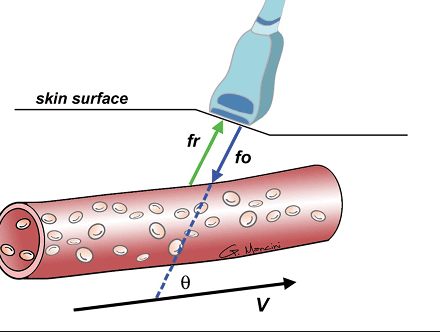
Siêu âm tĩnh mạch giúp bác sĩ tìm kiếm các cục máu đông
Obstruction of blood flow (such as a blood clot); Narrowing of blood vessels; Congenital tumors and vascular malformations; Reduced or no blood flow to various organs, such as the testicles or ovaries; Increased blood flow, which can be a sign of an infection.
3. How should I prepare?
Wear loose, comfortable clothes. You may need to remove all clothing and jewelry. You may be asked to wear a gown during the procedure. Just fast for a while if you want to check the veins in your abdomen. In this case, you will likely be asked not to eat any food or liquids except water for six to eight hours ahead of time. Otherwise, there are no other special preparations for venous ultrasound.
4. What does the device look like?
The ultrasound machine consists of a computer control panel, video display and an accompanying transducer. The adapter is a small handheld device that resembles a microphone. Multiple probes can be used in a single exam. High frequency transducer, inaudible, echoes back into the body. The principles are similar to hypersonics used by ships and submarines.
The sonographer applies a small amount of gel to the area to be examined and places the transducer there. The gel allows sound waves to travel back and forth between the transducer and the area being examined. The ultrasound image is displayed instantly on a video display like a computer monitor. The computer creates an image based on the magnitude (amplitude), pitch (frequency), and time it takes for the ultrasound signal to return to the transducer. It also takes into account the type of body structure and/or tissue through which the sound travels.
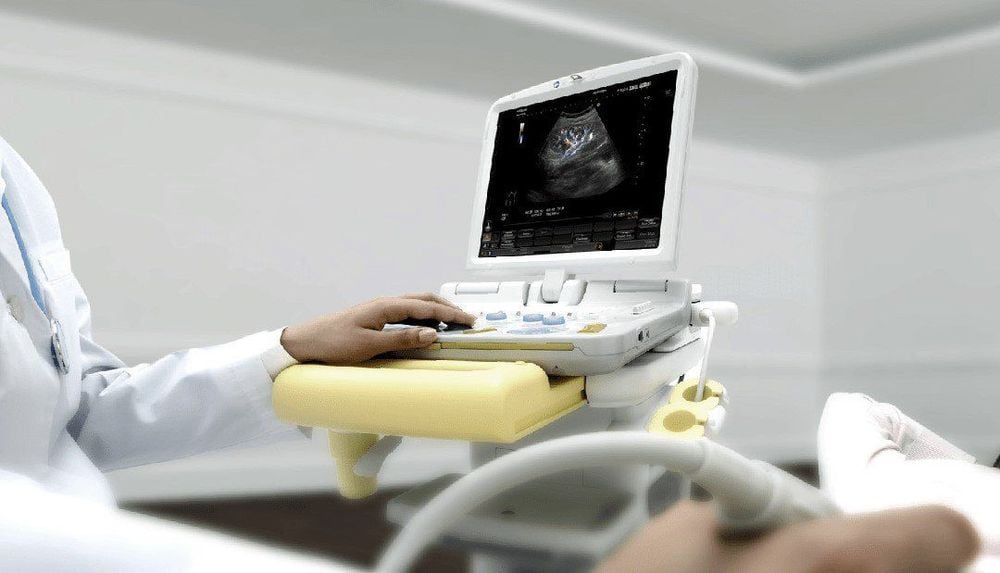
Hình ảnh máy siêu âm dùng trong y tế giúp bác sĩ thực hiện việc siêu âm
5. How does the process work?
Ultrasound imaging is based on the same principles related to sonar used by bats, ships and fishermen. When a sound wave strikes an object, it bounces back or echoes. By measuring these echoes, it is possible to determine the distance of the object as well as the size, shape, and consistency of the object. This includes whether the object is solid or filled with liquid.
In medicine, ultrasound is used to detect changes in the appearance of organs, tissues, and vessels and to detect abnormal masses, such as tumors.
During an ultrasound examination, a transducer both sends sound waves and records echoes. When the transducer is pressed against the skin, it sends tiny pulses of high-frequency, inaudible sound waves into the body. As sound waves bounce off internal organs, fluids and tissues, the sensitive receiver in the transducer records small changes in the pitch and direction of the sound. These characteristic waves are instantly measured and displayed by the computer, thereby creating a real-time image on the screen. One or more frames of a motion picture are usually captured as a still image. Short video loops of images can also be saved.
Doppler ultrasound, a special ultrasound technique, measures the direction and speed of blood cells as they move through the vessels. The movement of blood cells causes a change in the pitch of the reflected sound wave (known as the Doppler effect). The computer collects and processes the sound and creates a graph or color image representing the flow of blood through the blood vessels
6. How is the procedure done?
For most ultrasound exams, you will lie on your back on an examination table that can be tilted or moved. The patient may be turned to either side to improve image quality. A clear water-based gel is applied to the area of the body to be examined. This gives the transducer safe contact with your body and eliminates air pockets between the transducer and skin that could block sound waves from entering your body. The technician or radiologist places the transducer on the skin in various positions, scanning over the area of interest. The sound beam can also be angled from another position to better see an area of interest.
Doppler ultrasound is performed using the same transducer.
This ultrasound examination is usually completed within 30 to 45 minutes. More complex exams may take longer.
What will I experience during and after the ultrasound?
Most ultrasound exams are painless, quick and easy to accept.
Once you are positioned on the examination bed, the sonographer will apply some warm water-based gel to your skin, then place the transducer firmly against your body, moving back and forth the area of interest until the desired image. There is usually no discomfort from pressure when the transducer is pressed against the area being examined.
If the scan beam is done over a painful area, you may feel pressure or mild pain from the transducer. If you have a Doppler ultrasound, you may hear pulse-like sounds that change in pitch as blood flow is monitored and measured.
When the ultrasound is done, the transparent ultrasound gel will be removed from your skin. Any part that is not wiped clean quickly dries. Ultrasonic gels usually do not stain or discolor clothing.
After the ultrasound examination, you will be able to resume normal activities immediately.
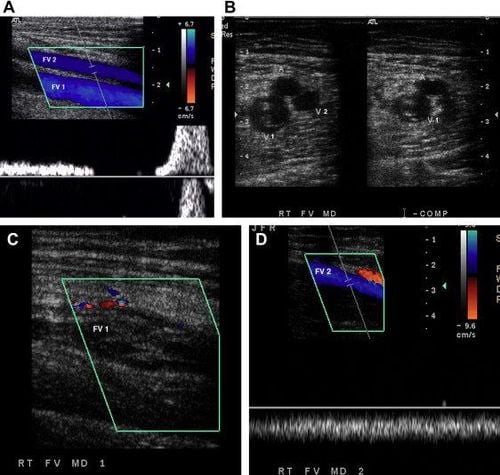
Siêu âm Dopplermàu cắt dọc TM đùi có hai nhánh (FV)
7. Who interprets the results and how do I get them?
The sonographer is trained to survey and interpret visits, will analyze the images, and send a signed report to the clinician who requested the exam. The clinician will then share the results with you. In some cases, the sonographer may discuss the results with you after the exam.
Follow-up tests may be necessary. If so, your doctor will explain why. Occasionally, a follow-up examination is done for an underlying abnormality that needs further evaluation with additional views or a special imaging technique. A follow-up examination may also be done to see if there are any unusual changes over time. Follow-up tests are sometimes the best way to see if treatment is working or if abnormalities have stabilized or changed.
8. What are the benefits and risks?
8.1 Benefits Most ultrasound scans are non-invasive (no needles or injections are used). Sometimes, an ultrasound exam can be temporarily uncomfortable, but shouldn't be painful. Ultrasound is widely available, easy to use, and less expensive than most other imaging methods. Ultrasound imaging is extremely safe and does not use radiation. Ultrasound scans give clear images of soft tissues that are not clearly visible on X-ray images. Venous ultrasound helps detect blood clots in the veins of the legs before they break off and travel to the lungs. It can also show the movement of blood in the blood vessels. Compared with intravenous angiography, which requires intravenous contrast, venous ultrasound is more accurate for detecting blood clots in the veins from the thigh to the knee. In the calf, because the veins become so small, ultrasound is less accurate. However, potentially dangerous venous blood clots are usually located in larger veins. 8.2 Risks Standard diagnostic ultrasound has no harmful effects on humans.
To ensure the accuracy of the ultrasound results of the veins of the upper and lower extremities, you should go to a reputable medical facility. The Department of Diagnostic Imaging at Vinmec is one of the departments that the hospital has invested heavily in equipment and people. New generation Doppler ultrasound system, completely imported from abroad, brings clear image quality. All technicians are highly trained in vascular imaging, experienced and capable of accurately diagnosing complex diseases through vascular ultrasound. After the results are available, the doctor will analyze, diagnose and advise on a thorough treatment direction.
If you have a need for vascular ultrasound, please book an appointment at the website or contact the hotline for detailed advice.
Please dial HOTLINE for more information or register for an appointment HERE. Download MyVinmec app to make appointments faster and to manage your bookings easily.






